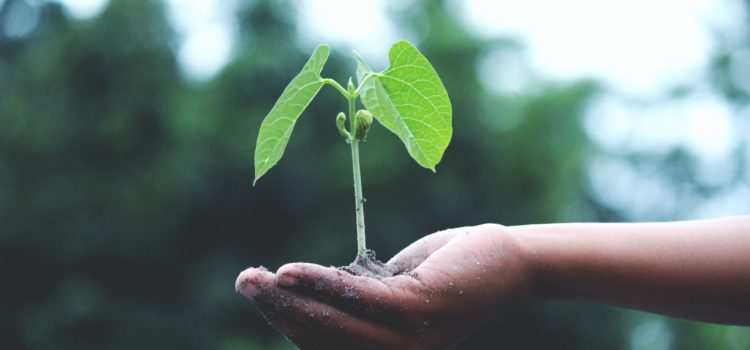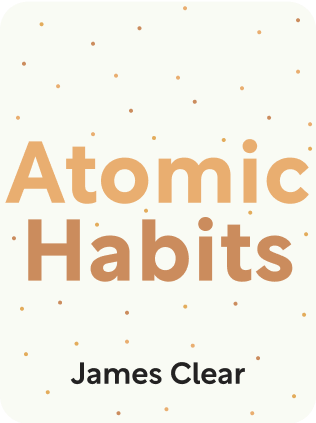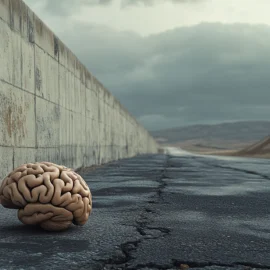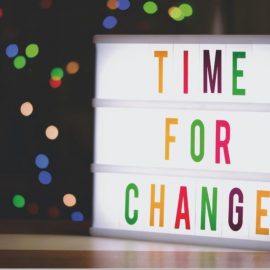

This article is an excerpt from the Shortform book guide to "Atomic Habits" by James Clear. Shortform has the world's best summaries and analyses of books you should be reading.
Like this article? Sign up for a free trial here .
What does it take to form a habit? What are the stages of habit formation?
According to personal development speaker James Clear, small steps and consistency are all you need to form a habit. When you practice a small behavior consistently, your brain “likes” it more and more, encoding it deeper into your neurocircuitry.
Here is how to form a habit, according to James Clear.
What Does It Take to Form a Habit?
Habits form when the brain processes the four stages of behavior: cue, craving, response, and reward. The brain is always actively taking in information from the outside world. When you are presented with a situation, the brain runs through a list of options to decide how best to respond. Through a process of trial and error, the brain deciphers which response elicits the best results. The response that delivers the most satisfaction is the one that will stick.
Each time you come across a similar situation, you will remember the satisfaction gained from that particular response and repeat it. Therefore, habits are nothing more than solutions found to manage life’s problems.
Four Stages of Habit Formation
Once you understand what each stage means and how they link together to form a habit, changing your behavior becomes a simpler task.
- Cue—The cue triggers the brain to recognize an opportunity for a possible reward.
- Craving—The craving occurs once the cue indicates this opportunity. The craving is the desire to achieve the reward and becomes the motivation to act.
- Your desire to achieve the reward stems from your brain’s desire to change some part of your physical or emotional state.
- Response—The response is the actual action taken. Whether you choose to respond relies on the strength of the craving and how much effort is required to act.
- If the action is easy to do, you will do it. If the action is too difficult or requires too much effort, you won’t do it.
- Reward—The reward is the resulting benefit or satisfaction gained from the response.
- All of the other three stages revolve around the reward. The cue notices it, the craving desires it, and the response obtains it.
This process is endless and loops round and round, which is why changing behavior is so difficult. Here’s an example of the stages in action:
- Cue: You sit down to respond to work emails.
- Craving: You begin to feel stressed by the number of emails and want to feel some relief.
- Response: You chew on your nails to relieve the stress.
- Reward: You feel less stressed.
- Habit: You begin to form a habit of chewing your nails while checking work emails.
These stages can be broken down into the problem phase and solution phase when looking at any habit. The cue and craving create the problem, and the response and reward provide the solution.
- Problem phase—Cue: You walk past a coffee shop on the way to work and smell freshly roasted coffee.
- Craving: Coffee gives you energy, and you want to feel energized.
- Solution phase—Response: You buy a cup of coffee.
- Reward: By the time you reach work, you are raring to go.
- Habit: You form a habit of buying a cup of coffee each day you walk to work.
To form a habit, all four stages need to occur. If any one of the stages fails, the habit will not be formed.
- If you remove the cue, your brain is not activated.
- If you remove the craving, you have no need to act.
- If the response is too hard, you won’t be able to do it or won’t try.
- If the reward is not satisfying, you have no reason to want to attain it again.
Cues can be anything in life and often don’t differentiate from person to person. What does differ is the craving.
- Two people might hear the sound of a slot machine. This is the cue.
- One is a compulsive gambler and is triggered to crave the rush of gambling. They will find a way to gamble so their emotional craving is appeased, which is the reward.
- The other person might never gamble, so the cue of slot machines does nothing for them. They crave nothing, so they don’t respond.
In a world full of cues, learning how to change your cravings or responses to more positive rewards is the first step in gaining control over your behavior.
The Four Laws of Habit Formation
Creating new habits is easier when you understand how to approach the different stages of habit formation. Each stage has an accompanying law that, when followed, promotes positive changes in your life.
- Cue—Make it obvious.
- Craving—Make it attractive.
- Response—Make it easy.
- Reward—Make it satisfying.
The inverse of these laws help break your bad habits.
- Cue—Make it invisible.
- Craving—Make it unattractive.
- Response—Make it difficult.
- Reward—Make it unsatisfying.
With these principles, you can tackle any habit you wish to create or break by making the stages work for you.

———End of Preview———
Like what you just read? Read the rest of the world's best book summary and analysis of James Clear's "Atomic Habits" at Shortform .
Here's what you'll find in our full Atomic Habits summary :
- The 4 Stages of Habit Formation you can use to transform your life
- How more than half of your daily actions are automatic
- Why some habits stick and why others won't






